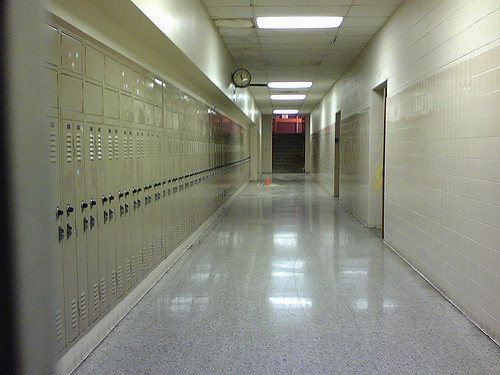
As school students settle into the start of a new year, some low-income kids in districts around the state are getting free supplies to set them up for success. In September, members of the Oakland-based nonprofit K to College partnered with student volunteers from the University of California, Los Angeles to give out $45,000 in school supplies and dental kits to 500 students at Utah Street Elementary School.
The idea of giving school supplies and dental kits to low-income students, with a focus on those who are classified as homeless, started at another UC campus farther north.
“It began as an entirely volunteer-based student group my senior year at UC Berkeley,” said Benito Delgado-Olson, a cofounder and executive director of K to College. “A small number of my colleagues – I guess in 2009 – put together a pilot program along with a business plan.”
With a $22 donation, the nonprofit is able to put together $65 worth of supplies. They have been building corporate sponsorships, investors and a donor-base in recent years.
The volunteers in Los Angeles were joined by Speaker of the State Assembly John Perez, UCLA Chancellor Gene Block and Los Angeles City Councilmember Jose Huizar for the kick-off event at Utah Street Elementary School.
K to College started out simple – by giving backpacks full of school supplies to students at a YMCA after-school program in Berkeley. From there, the program has expanded to include the distribution of dental kits as a big part of their efforts.
Volunteers work with more than 100 school districts in California, many in the Bay Area. Delgado-Olson said he has been spending about half of his time each month traveling to other districts such as the Los Angeles Unified School District and Fresno Unified School District. K to College hosted a kick-off event at Mario Olmos Elementary School in Fresno in August. They also have the Central Coast in their sights.
“Monterey County is high on the list,” Delgado-Olson said, “Particularly Salinas and King City.”
The group added dental kits to their efforts in 2010 when they came across a report that poor oral health is one of the leading causes of absences for public school children. In November 2009, the UCLA Center for Health Policy Research released a study that found that 7 percent of students in the state missed at least one day of school due to a dental problem.
Among those students who missed school for a dental problem, 65 percent of those whose families could not afford dental care were likely to miss two or more days.
“If you’ve ever had a bad toothache or a cavity, you can relate to how hard it is to concentrate on anything,” Delgado-Olson said. “Imagine you are 8 years old and you have multiple teeth that feel that way.”
The dental kits include toothpaste, a toothbrush and floss.
The Maternal Child and Adolescent Health program for the state, along with the Dental Health Foundation, co-sponsored an oral health needs assessment in 2005 of more than 21,000 California school children that found oral health is a growing need among low-income families.
Published in 2006, the study found that by third grade more than 70 percent of children have a history of tooth decay.
The study found that a quarter of those children had untreated tooth decay and about 4 percent reported suffering from dental pain or a tooth abscess.
After the report was released, MCAH set a goal of increasing the number of children who receive preventive dental services such as fluoride.
Since the report was released in 2006, the agency has worked with Women, Infant and Children and California Nutrition Network to produce pamphlet and brochures about how to prevent tooth decay, in Spanish and in English. They have also updated guidelines in a brochure on how to prevent tooth decay in babies and toddlers.
The Healthy People initiative, a federal effort to increase health of Americans by 2020, notes that minorities, those with lower education and those with lower income are more likely to have oral disease and less access to dental treatment.
Delgado-Olson said his group is hoping that giving children some of the tools to keep their teeth clean can help combat some of the issue.
The partnership with the school districts is one of the key ways K to College staff members get their supplies to the students in the most need. They primarily focus on schools with a high rate of students enrolled in the free or reduced lunch program and also students who are identified as McKinney-Vento students. McKinney-Vento is a federal mandate that protects the educational rights of homeless children and youths.
“At a time when funding for our schools is historically low, K to College offers a solution to a basic but critical need of every student – the instructional materials necessary to learn,” said Santa Clara County Office of Education Superintendent Charles Weis, one of seven county superintendents, in a press release. “The partnership between K to College and our school districts ensures that important materials and benefits go to the students who need them the most.”
Since its inception, the group has served more than 220,000 homeless students in more than 100 districts statewide in addition to the low-income students.
“There are various laws that they can’t reveal the information – it’s illegal,” Delgado-Olson said, of school officials releasing names of students identified as homeless. “But they already have the administrator in place to identify who those homeless students are…the feedback we’ve gotten is that it really adds to their relationships and makes them seem like more of a friend.”
For more details, visit www.ktocollege.org.





